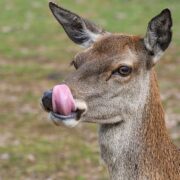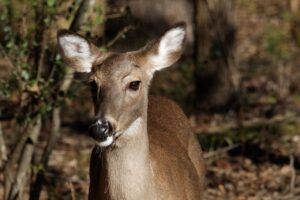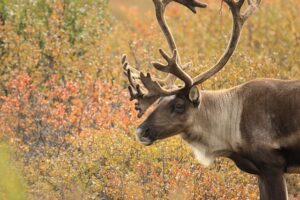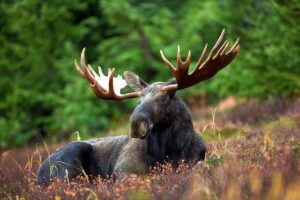Cervids and Man, a history of adaptation
Cervids: family of ungulate mammals whose males carry antlers (deer, roe deer…). (Larousse, n.d.)
Last December, the Court of Appeal suspended the controlled hunting of deer that currently overpopulate the famous Michel-Chartrand Park in Longueuil. The case will have to be heard by the Superior Court next April before the city can have the green light again.
The white-tailed deer, the most common in North America, has been able to expand its habitat thanks to the presence of humans on its territory. Tree cutting, the reduction of predators and hunting regulations are all anthropogenic factors that have allowed the white-tailed deer to proliferate, even in urban areas. Michel-Chartrand Park, with a population of 108 individuals according to the MFFP, has largely exceeded its carrying capacity of only about ten cervids.
Carrying capacity: maximum population size of a species that an environment can support. (actu-Environnement, s.d.)
While southern Quebec is overpopulated with white-tailed deer, the north of the province fears the extinction of certain cervid species. This is particularly true of woodland caribou, which is experiencing a worrying decline due mostly to the destruction of its habitat by logging. As an important environmental indicator of forest health, it is all too safe to say that northern ecosystems are deteriorating rapidly.
In Quebec, three different ecotypes of caribou are present on the territory. The woodland caribou, a vulnerable species according to Quebec legislation, is found in the boreal forest. The mountain caribou has a very small territory in the mountains of Gaspésie and is highly threatened. The migratory caribou wanders between the boreal forest and the arctic tundra. Although it has no legal status, its population, like that of the other two, declines year after year.
Ecotype: Subspecies generated by selection within a particular habitat and having adapted genetically to that habitat, but which can interbreed with other members of the species. (actu-Environnement, s.d.)
Several projects in all parts of Quebec are being developed to fight against the disappearance of the species. Protected areas in partnership with the Innu native communities, herds from Val-d’Or and Charlevoix sent to captivity and projects to put pregnant females in enclosures in the Gaspésie Peninsula: everyone is trying to save the Caribou.
Last but not least, the cervid that, according to a recent study by Laval University, is tempering the effects of climate changes on northern forest, the moose. This gigantic herbivore ingest thousands of kilograms of tree twigs in a single year. Living in the boreal forest, hardwoods are usually rare among the spruce trees. However, due to climate change, the former, better adapted to warmer temperatures, are competing with the ladder. An imbalance is slowly being established in northern ecosystems, unless there is an increased presence of moose. Indeed, feeding on deciduous trees, they reduce the pressure that these exert on their competitors and restore the balance of forest stands.
Twig: the last division of the smallest branches of a tree. (Adapted from Larousse, n.d.)
It should be noted, however, that the warming climate is not all good news for this impressive cervid. The winter tick, a specie that has moved rapidly northward due to warmer temperatures, is wreaking havoc on moose populations.
White-tailed deer, caribou, and moose, are you now able to tell their story? One thing is certain, our passage on earth does not go unnoticed in the daily life of Quebec’s cervids, each of which is adapting in its own way to the anthropisation of its territory.






